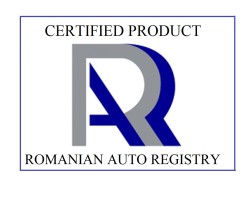 LPG fuel for automobiles is often a mixture of liquid hydrocarbons with high volatility that would normally be stored under pressure. This product is regulated by the European standard EN 589: 2008 + A1: 2012 which has been approved by CEN (Comité Européen de Normalisation) on 29 June 2008 and includes Amendment 1 approved by CEN on 16 January 2012. CEN members are obliged to respect the Regulation CEN / CENELEC which stipulates the conditions under which this European standard receives the status of a national standard without any changes.
LPG fuel for automobiles is often a mixture of liquid hydrocarbons with high volatility that would normally be stored under pressure. This product is regulated by the European standard EN 589: 2008 + A1: 2012 which has been approved by CEN (Comité Européen de Normalisation) on 29 June 2008 and includes Amendment 1 approved by CEN on 16 January 2012. CEN members are obliged to respect the Regulation CEN / CENELEC which stipulates the conditions under which this European standard receives the status of a national standard without any changes.
CEN members are the national authorities for standardization from the following countries: Austria, Belgium, Bulgaria, Cyprus, Croatia, Denmark, Estonia, Finland, France, Germany, Greece, Ireland, Iceland, Italy, Latvia, Lithuania, Luxembourg, Malta, Great Britain, Norway, Netherlands, Poland, Portugal, Czech Republic, Romania, Slovakia, Slovenia, Spain, Sweden, Turkey and Hungary. This standard defines the requirements that must meet the LPG product used as fuel for cars in Romania and European Union countries.
The basic components of automotive LPG for cars are propane (C3H8) and butane (C4H10), their proportion varies according to season and temperature. For the cold season is generally used a composition with about 60% Propane + 40% Butane or 80% Propane + 20% Butane and for the warm and hot season the composition should be 30/70, 40/60 and 50/50. Below we present the characteristics of the LPG product used as fuel for cars, with minimum or maximum limits:
| Characteristic | Measure Unit | Limits | Test Method | |||
| Minimum | Maximum | |||||
| Motor octane number, COM | 89,00 | EN 589-12 (Annex B) | ||||
| Total content of dienes | %mol | 0,50 | EN 27941 | |||
| Hydrogen sulfide | negative | EN ISO 8819 | ||||
| Total sulfur content | mg/kg | 50,00 | ASTM D 6667, ASTM D 3246 | |||
| Corrosion on copper blade (1h at 40℃) | evaluation | class 1 | EN ISO 6251 | |||
| Evaporation residue | mg/kg | 60,00 | EN 15470, EN 15471 | |||
| Vapor pressure, relative, at 40 ℃ | kPa | 1550,00 | EN ISO 4256, EN ISO 8973 and Annex C | |||
Vapour pressure, relative, minimum 150kPa, at temperature:
|
°C |
|
|
EN ISO 8973 and annex C | ||
| Water content | Passes | EN 15469 | ||||
| Smell | unpleasant and specific at 20% L II | EN 589-12 (Annex A) | ||||
The winter period in Romania is considered starting from October 1 to April 30 and the summer period starting from May 1 to September 30.
 Română
Română English
English